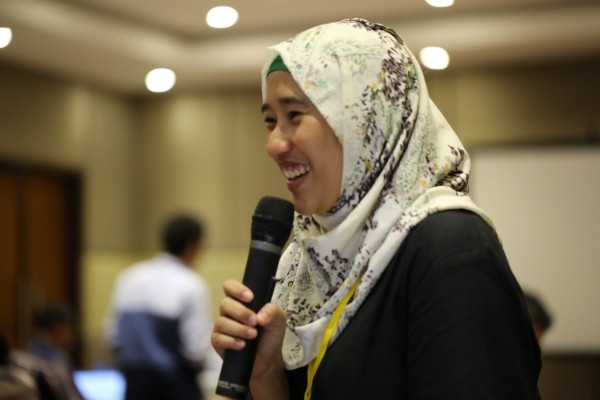
Estradivari, WWF Indonesia (Photo: P. Mumby).
Indonesian partners plan MPAs
December 20 2018
NGO and government partners in Indonesia are designing Marine Protected Areas (MPAs) for 27 locations across 34 provinces using CCRES’s MPA toolbox.
WWF Indonesia and the Indonesian Ministry of Marine Affairs and Fisheries (MMAF) were introduced to CCRES’s MPA toolbox at a workshop in 2016.
At this workshop, attendees set out to support improved MPA design for fisheries. They installed CCRES’s new marine planning software tools onto their own computers in order to design MPAs.
The activity focused on the benefits of effective MPAs, reef vulnerability and coral reef connectivity, as well as the overall coverage, size and placement of strict no-take fishery reserves.
“In the past, MPAs were created to protect biodiversity. Now the focus is shifting towards designating areas based on building fisheries,” said Prof Peter Mumby, CCRES Chief Scientist, who led the workshop together with Dr Nils Krueck (CCRES MPA Design Specialist), both from The University of Queensland (UQ).
The workshop was a collaboration between the CCRES project and Estradivari and Christian Handayani of WWF Indonesia, based on a related project funded by the Australian government (ARC Linkage). The workshop provided opportunity for participants from diverse areas around Indonesia to share their experiences and knowledge of the systems and practicalities of MPA design.
Estradivari remarked that there is more ocean data today than at any time in the past 100 years, but often it can be time-consuming and difficult for key stakeholders to use this data to inform management and conservation.
"The CCRES MPA tools have helped us to systematically determine the best possible scheme to optimize MPA design to support fisheries, in a user-friendly way even for practitioners with less scientific capacity," said Estradivari. "They also allow key stakeholders to discuss various scenarios to achieve conservation targets."
The University of Queensland researchers found that working with partners who wanted to use the MPA tools was rewarding and helpful in posing new research questions.
“It was fantastic to see local NGOs taking our new connectivity optimisation tool and already applying it to advise on MPA design questions in the Sunda Banda [a seascape within The Coral Triangle],” remarked Nils.
“It has been an inspiration for us at CCRES for these practitioners to share the challenges they face, and for us to consider ideas for research to address those problems,” Peter added.



